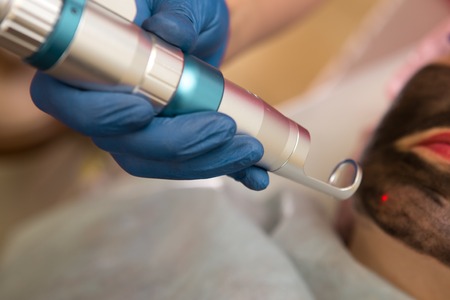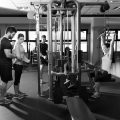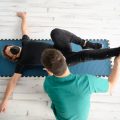1. Introduction to Post-Stroke Swallowing Disorders
After a stroke, many Americans face challenges with swallowing, a condition known as dysphagia. This problem is more common than people realize and can have a big impact on everyday life. According to studies in the United States, about 30% to 65% of stroke survivors experience some degree of swallowing difficulty. Dysphagia is not just uncomfortable—it can lead to serious health risks like choking, aspiration pneumonia, malnutrition, and dehydration.
Prevalence of Post-Stroke Dysphagia in the U.S.
| Severity Level | Estimated Percentage of Stroke Survivors |
|---|---|
| Mild Dysphagia | 20-35% |
| Moderate Dysphagia | 10-20% |
| Severe Dysphagia | 5-10% |
Impact on Quality of Life
Dysphagia affects much more than just eating or drinking. It can make social gatherings stressful or embarrassing because meals are such an important part of American culture. People may avoid family dinners, holiday celebrations, or eating out with friends due to fear of choking or needing special food preparations. Over time, this can lead to feelings of isolation, anxiety, and depression.
The Importance of Timely Intervention in American Clinical Settings
In the U.S., healthcare professionals understand that early assessment and intervention are critical for stroke survivors with dysphagia. Quick action helps reduce complications and improves the chances for recovery. Speech-language pathologists (SLPs) are often called upon soon after a stroke to evaluate swallowing function and start rehabilitation plans tailored to each person’s needs.
Common Steps in Addressing Post-Stroke Dysphagia in America
| Step | Description |
|---|---|
| Screening & Evaluation | Initial bedside swallow tests and imaging if needed. |
| Nutritional Support | Special diets or feeding tubes for safety and nutrition. |
| Therapeutic Exercises | Specific exercises led by SLPs to strengthen muscles involved in swallowing. |
| Ongoing Monitoring | Regular check-ins to adjust care plans as recovery progresses. |
This focus on early detection and individualized care reflects the standard approach in American clinical practice for helping stroke survivors regain safe and enjoyable eating experiences.
2. Assessment Approaches in American Practice
In the United States, evaluating swallowing function after a stroke is a crucial first step before starting rehabilitation. American clinical practices rely on a combination of standardized screening tools, advanced instrumental assessments, and collaboration among different healthcare professionals. Here’s how these approaches typically work:
Standardized Screening Tools
After a stroke, patients are often screened for dysphagia (swallowing difficulties) using simple bedside tools. These screenings help quickly identify those at risk and guide decisions about further testing or immediate interventions.
| Screening Tool | Description | Common Use |
|---|---|---|
| Modified Mann Assessment of Swallowing Ability (MMASA) | A checklist used by nurses or therapists to rate swallowing function based on observations during water swallows. | Initial screening within hours of hospital admission |
| Yale Swallow Protocol | A rapid bedside assessment involving a brief patient interview and a controlled water swallow test. | Quick identification of aspiration risk |
| TOR-BSST (Toronto Bedside Swallowing Screening Test) | A structured protocol that includes voice quality, tongue movement, and water swallow trials. | Often used in acute care settings |
Instrumental Assessments
If a patient is flagged as high risk during initial screening or shows ongoing issues, more detailed instrumental tests are performed. Two main tests are widely used in American practice:
Videofluoroscopic Swallow Study (VFSS)
This is also called a “modified barium swallow.” During the VFSS, the patient swallows different consistencies of food and liquid mixed with barium while X-ray video is recorded. This allows clinicians to see real-time movements of the mouth, throat, and esophagus to pinpoint where swallowing problems occur.
Fiberoptic Endoscopic Evaluation of Swallowing (FEES)
This test uses a small flexible camera inserted through the nose to view the throat while the patient eats and drinks. FEES provides a close-up look at how well food passes through the throat and if any material enters the airway.
| Test Name | Main Purpose | Advantages | Limitations |
|---|---|---|---|
| VFSS | Visualize all phases of swallowing; detect aspiration or residue | Comprehensive; good for treatment planning; shows oral & pharyngeal phases clearly | X-ray exposure; requires radiology suite; not portable |
| FEES | Directly view larynx & pharynx before/after swallow; assess secretion management | No radiation; can be done bedside; repeatable as needed | Cannot see actual swallow moment (“white-out” phase); limited view of oral phase |
The Multidisciplinary Team Approach in the U.S.
Swallowing rehabilitation after stroke in America involves various healthcare professionals working together:
- Speech-Language Pathologists (SLPs): Lead assessment and therapy for swallowing disorders.
- Nurses: Perform initial screenings and monitor daily swallowing safety.
- Physicians (Neurologists, Rehabilitation Specialists): Oversee medical management and coordinate referrals for assessments.
- Dietitians: Advise on safe food textures and nutrition for patients with dysphagia.
- Occupational Therapists: Support adaptive equipment use or positioning strategies for safe eating.
This team-based approach ensures that each aspect of a stroke survivor’s health is addressed, improving both safety and recovery outcomes during rehabilitation.
![]()
3. Therapeutic Interventions and Evidence-Based Techniques
Swallowing Therapy Strategies in American Practice
In the United States, rehabilitation of swallowing function after a stroke often involves a combination of hands-on therapy, patient education, and home exercises. Speech-language pathologists (SLPs) are the primary professionals guiding this process. Their approach is individualized, considering each patients specific strengths and challenges.
Common Swallowing Therapy Techniques
| Technique | Description | When Used |
|---|---|---|
| Oral Motor Exercises | Exercises to strengthen lips, tongue, and jaw muscles | Mild to moderate muscle weakness or coordination issues |
| Mendelsohn Maneuver | Prolongs larynx elevation during swallowing by holding the Adam’s apple up while swallowing | Poor airway protection or reduced laryngeal movement |
| Effortful Swallow | Patient swallows hard to increase tongue base movement and throat muscle activity | Residue in the throat after swallowing or weak tongue base |
| Masako Maneuver (Tongue-Hold) | Holding the tongue between teeth while swallowing to strengthen muscles in the back of the throat | Difficulties with posterior pharyngeal wall movement |
| Shaker Exercise | Lifting head while lying down to strengthen neck muscles that help open the upper esophagus | Poor opening of the upper esophageal sphincter |
Compensatory Techniques and Postural Adjustments
Compensatory strategies are quick adjustments patients can use during meals to improve safety and ease of swallowing. These techniques do not change the physiology but help reduce risk of choking or aspiration.
| Technique/Posture | Description/How To Use It | Typical Indication |
|---|---|---|
| Chin Tuck Position | Tucking chin towards chest when swallowing to protect airway | Aspiration risk due to delayed swallow response or poor airway closure |
| Head Turn (to weaker side) | Turning head toward weaker side to direct food down stronger side of throat | Unilateral pharyngeal weakness after stroke |
| Sip-and-Swallow Technique | Taking small sips followed by deliberate swallows for better control | Mild swallowing difficulties or fatigue with larger volumes |
| Double Swallow Technique | Swallowing twice per bite or sip to clear residue from the throat | Pocketing or leftover food in the throat after one swallow |
Dietary Modifications Commonly Recommended in American Rehab Centers
The texture and consistency of foods are often adjusted based on a patient’s ability to safely chew and swallow. Here’s a simple overview:
| Diet Level/Type | Description/Examples | Main Goal/Who Benefits Most? |
|---|---|---|
| Puréed Diet (Level 1) | Smooth, pudding-like foods (e.g., mashed potatoes, applesauce) | Severe chewing/swallowing problems; high aspiration risk patients |
| Mechanical Soft Diet (Level 2) | Moist, soft-textured foods that require little chewing (e.g., scrambled eggs, ground meats) | Mild-to-moderate chewing/swallowing difficulty |
| Advanced Soft Diet (Level 3) | Tender meats, soft fruits, no hard/crunchy foods | Mild difficulty; transitioning back to regular diet |
| Thickened Liquids | Nectar-thick, honey-thick liquids to slow flow and prevent choking | Aspiration risk with thin liquids |
Emerging Rehabilitation Technologies in America
A growing number of American rehab centers use technology to enhance traditional therapy. Some examples include:
- Neuromuscular Electrical Stimulation (NMES): This uses mild electrical currents to stimulate throat muscles during therapy sessions.
- Biofeedback Devices: Sensors provide real-time feedback on muscle activity so patients can see their progress during exercises.
The choice of interventions is always tailored by SLPs in collaboration with physicians and other therapists, ensuring that each stroke survivor receives care suited to their unique needs and goals.
4. Interprofessional Collaboration and Patient-Centered Care
In the United States, helping stroke survivors regain their swallowing ability involves teamwork across several healthcare professions. This approach is called interprofessional collaboration, and it puts the patient’s needs and goals at the center of care. Below, we highlight how different specialists work together and why education for both patients and families is essential in American clinical practice.
The Rehabilitation Team: Roles and Responsibilities
| Professional | Main Role in Swallowing Rehab |
|---|---|
| Speech-Language Pathologist (SLP) | Leads assessment and therapy for swallowing, teaches exercises, monitors progress |
| Occupational Therapist (OT) | Helps patients improve self-feeding skills, posture, and adaptive equipment use |
| Nurse | Monitors safety during eating, manages medications, provides daily support and education |
| Physician | Oversees medical care, coordinates with rehab team, addresses underlying health issues |
How Interdisciplinary Teamwork Happens in the U.S.
The team meets regularly to discuss each patient’s progress. They share information from their own assessments—such as a nurse’s observations of eating safety or an SLP’s findings from swallowing tests—to build a complete picture of the patient’s abilities and challenges. This helps everyone stay on the same page and make better decisions together.
Why Patient and Family Education Matters
In American healthcare, patients and their families are encouraged to participate actively in decision-making. Educating them about safe swallowing practices, diet modifications, and warning signs of complications (like choking or aspiration pneumonia) helps improve outcomes.
- Patient Education: Patients learn exercises to strengthen their swallowing muscles and tips for safe eating.
- Family/Caregiver Education: Families are taught how to help with meal prep, monitor for problems, and support recovery at home.
- Cultural Sensitivity: The team respects food preferences and cultural traditions when making recommendations.
Example: A Typical Session in American Practice
An SLP may lead a training session where nurses demonstrate safe feeding techniques. An OT might show how special utensils or seating can help. At the same time, family members ask questions about what foods are safest or how to spot trouble signs at home. This open communication builds confidence and supports recovery long after hospital discharge.
5. Clinical Challenges and Future Directions
Common Barriers to Optimal Dysphagia Management in the U.S.
Rehabilitation of swallowing function after stroke is a complex process, especially in the American healthcare system. There are several challenges that clinicians, patients, and families often face when it comes to managing dysphagia (swallowing difficulties). Understanding these barriers is key to improving care and recovery outcomes.
Barriers to Effective Swallowing Rehabilitation
| Barrier | Description | Impact on Patients |
|---|---|---|
| Healthcare Access | Not all patients have easy access to specialized rehabilitation centers or speech-language pathologists (SLPs). | Delays in assessment and therapy can lead to poorer recovery and increased risk of complications. |
| Insurance Coverage | Insurance plans may limit the number or type of therapy sessions covered. | Out-of-pocket costs may prevent patients from completing recommended treatment plans. |
| Lack of Awareness | Patients and caregivers might not recognize symptoms or know when to seek help. | Dysphagia may go undiagnosed, increasing risk for pneumonia or malnutrition. |
| Cultural & Language Barriers | Diverse populations may have difficulty navigating the healthcare system or understanding instructions. | Ineffective communication can lead to misunderstandings about safe eating practices or therapy exercises. |
Emerging Trends in Dysphagia Rehabilitation
The field of dysphagia rehabilitation in the U.S. is evolving as new research and technology emerge. Clinicians are exploring ways to improve outcomes for stroke survivors by integrating innovative tools and approaches into practice.
- Telehealth Services: Virtual visits with SLPs allow more people—especially those in rural or underserved areas—to receive timely evaluations and therapy from home.
- Advanced Diagnostic Tools: New imaging techniques and assessments help pinpoint swallowing problems more accurately and tailor treatments to each patient’s needs.
- Patient-Centered Care: There is a growing emphasis on personalized therapy plans that consider a patient’s preferences, lifestyle, culture, and family support systems.
- Interdisciplinary Teams: Collaboration among doctors, nurses, dietitians, occupational therapists, and SLPs ensures comprehensive care for complex cases.
Research Priorities Moving Forward
The American clinical community is focusing on several research priorities to further enhance dysphagia management after stroke:
- Inequality Reduction: Studying how socioeconomic status affects access to care and developing strategies to close these gaps.
- Treatment Effectiveness: Evaluating which therapies work best for different types of swallowing problems through large-scale studies.
- Technology Integration: Assessing how digital health tools (like mobile apps for exercise tracking) can support long-term recovery at home.
- Cultural Competence Training: Educating clinicians on how to address language, cultural beliefs, and dietary preferences in treatment planning.
Towards Improved Outcomes
The future of post-stroke dysphagia rehabilitation in America will rely on breaking down these barriers while embracing innovative solutions. By addressing access issues, insurance limitations, and supporting ongoing research, providers aim to give every stroke survivor the best chance at regaining safe swallowing function and quality of life.


